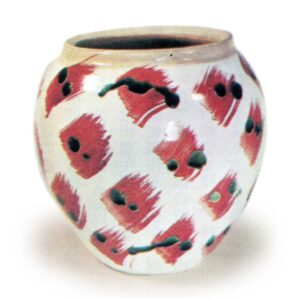
Born in 1893 (Meiji 26) to a family of clan doctors in Kusaminato, Shinminato, Toyama Prefecture. He dropped out of Toyama Junior High School. In 1919, he moved to Shibuya, Tokyo, and built a coal kiln and other kilns in his home and fired until the Great Kanto Earthquake, but it did not seem to be successful. After the earthquake, he moved to Ogawa-cho, Hiki-gun, Saitama Prefecture, where he built a coal kiln and produced pottery for about two years, but this too was a failure. In April 1927, he moved to Hegaya, Imakumano-minami-Hiyoshi-cho, Higashiyama-ku, Kyoto City, and began to learn pottery again in earnest. In 1934 (9th year of the same period), he spent two months in the kiln of Nakazato Tarouemon in Karatsu, Saga Prefecture, producing Karatsu ware. In 1935, he built a kiln in Yase (Sakyo Ward), Kyoto, and made this his permanent residence. He studied persimmon glaze in the style of the Chinese imperial kilns, the Hengyong style of the Northern Song dynasty, and the Tenmoku glaze of the Southern Song dynasty, and also fired Persian-style ceramics. He specialized in oil drop tenmoku and kinoha tenmoku, and became an Important Intangible Cultural Property holder in 1955 (3O). He was also educated in Chinese studies and was a Noh calligrapher.


